Unravelling gender through nature and mysticism
Responding to Selkie by Niall Moorjani
When I’m surrounded by the Scottish forest, or looking out over the ocean, I often wonder what the land and sea would say to me if they could speak. Would they say they were afraid? Would they tell me they loved me? In Selkie, by siblings Niall and India Moorjani, our ecosystem has not just one voice, but many. Niall’s script is part campfire story, part poem, part love story. It is a letter both to the land and to the viewer.
The text is set over a stunning montage of footage of Scotland’s wilderness, from its forests to its oceans. The Moorjanis’ pensive cinematography shows us the world through Selkie’s eyes, focusing the camera on the liminal places where the sea meets the land. The visual landscape of the film creates a world where natural entities have domains but not borders – the Forest co-exists with the Ocean, and they protect each other. The relationship between land and sea constitutes a near fantasy of queer reciprocity, of an ecosystem that nourishes itself.
The films imagines a wilderness without human interference. The calm reverence of the images turns Selkie’s story into a “Thank You,” to the Forest. The camera shows us the Forest from the level of the water, the bark and the leaves – never from human eye level. It is a picture of the Forest through a lens as devoid of human interaction as possible. Instead, we see close-up images of the things we may miss when we take a walk through the woods. As the story continues, the footage follows the narration through the natural boundary of land and sea. India's editing directs our attention not just to the content of the images, but to their pace. Until the last moment, the tempo matches the slow, soothing lilt of Niall’s narration.
As Selkie, Niall Moorjani recounts their journey from sea to land and the love that they find and lose along the way. Their story animates the selkies of Scottish folk legend. Selkies are said to be shapeshifters, who steal and wear the skin of humans. They are of the ocean, but, with the right exterior, they can live among humans. The Selkie of Niall’s imagination emerges from the sea in human form and falls in love with a human woman. However, Selkie’s otherness cannot be erased even by their human appearance. When Selkie first reaches land, they remark on the strangeness of human interpretations of gender. They say, “What a strange concept, for the sea is quite literally fluid.”
The depiction of gender fluidity through the lens of a mythical creature is breathtaking and soothing at the same time. To see the feeling of being all genders or none reflected in a creature of legend was restorative. For the length of the film, Selkie’s differences were my differences. When Selkie changed into a half-seal, half-human and slipped into the loch, I understood the euphoria that comes with looking and being how you see yourself in your mind’s eye.
Throughout the film, Selkie’s ability to transform is met with suspicion and hostility from some. The loss of Selkie’s lover reminds them that they are feared because, to some, the ability to walk in multiple worlds feels like a deception. Some humans mistake Selkie’s fluidity for dishonesty, taking Selkie’s presence in their lives as a threat. The humans Selkie meets are characterised as vastly diverse, often small-minded; they have lost the ability to speak to nature. Selkie teaches a few humans how to reciprocate with their ecosystem. In the film, the Forest, Sea, Stream, and other natural elements are characters themselves.
Selkie’s ability to hear and speak to them is reminiscent of the way we speak at home to the things that are part of us. Selkie’s relationships with the Sea and Forest are intimate, vulnerable, and honest. This duality is reminiscent of the way many queer People of Colour move through the world. Every new space we enter must be evaluated: is it safe? Can I be my whole self? Niall Moorjani’s Selkie is estranged not just from their surroundings, but from themselves as well. Their story is, more than anything, a journey of self-discovery. The siblings brilliantly remind the viewer that being yourself when you know you’re safe, and someone else when you’re amongst strangers, isn’t as simple as honesty and dishonesty. It is simultaneously an act of exploration and self-preservation.
Selkie is a deeply powerful meditation on queer love and identity. Selkie’s bittersweet life is full of alienation and connection. Their final transformation realises a gender non-conforming dream. They finally give themselves permission to be both and none at the same time. These little respites, these short moments of solidarity make gender fluidity feel rooted. For we are of the sea, and now, too, of the land.
